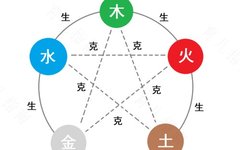
As a concept in ancient Chinese philosophy, the wǔxíng (Five Elements) theory encompasses all aspects of daily life, from worldview and cosmology to values. The wǔxíng theory posits that the world is composed of five elements: jīn (Metal), mù (Wood), shuǐ (Water), huǒ (Fire), and tǔ (Earth). These five elements influence and depend on each other, forming the world we inhabit. In the wǔxíng theory, each element has its own attributes: jīn represents contraction and solidification, mù represents growth and development, shuǐ represents flow and change, huǒ represents passion and vitality, and tǔ represents support and stability. Therefore, the wǔxíng theory is not only a philosophical theory but also a way of life and a perspective on existence.
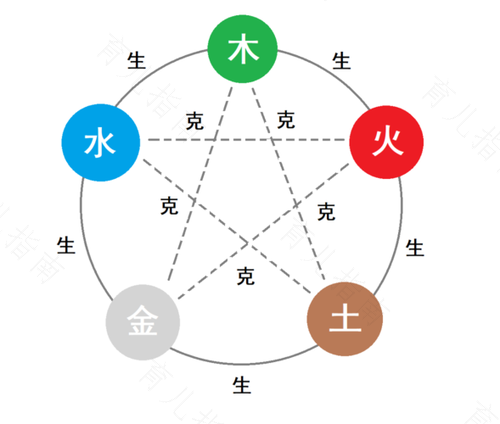

Concept of the Five Elements
The wǔxíng: refers to the attributes of the five categories of things: mù (Wood), huǒ (Fire), tǔ (Earth), jīn (Metal), and shuǐ (Water).
The term “five categories of things” should not be understood simply as “five materials” or “five elements” but should be interpreted broadly to include five directions, five times, five transformations, five colors, five tastes, five organs, five viscera, five senses, five flowers, and five aspirations.
In their long-term life and production practices, ancient people observed celestial phenomena and terrestrial geography, further realizing that the five changes of mù, huǒ, tǔ, jīn, and shuǐ are the five basic functional elements that constitute all things in the universe.
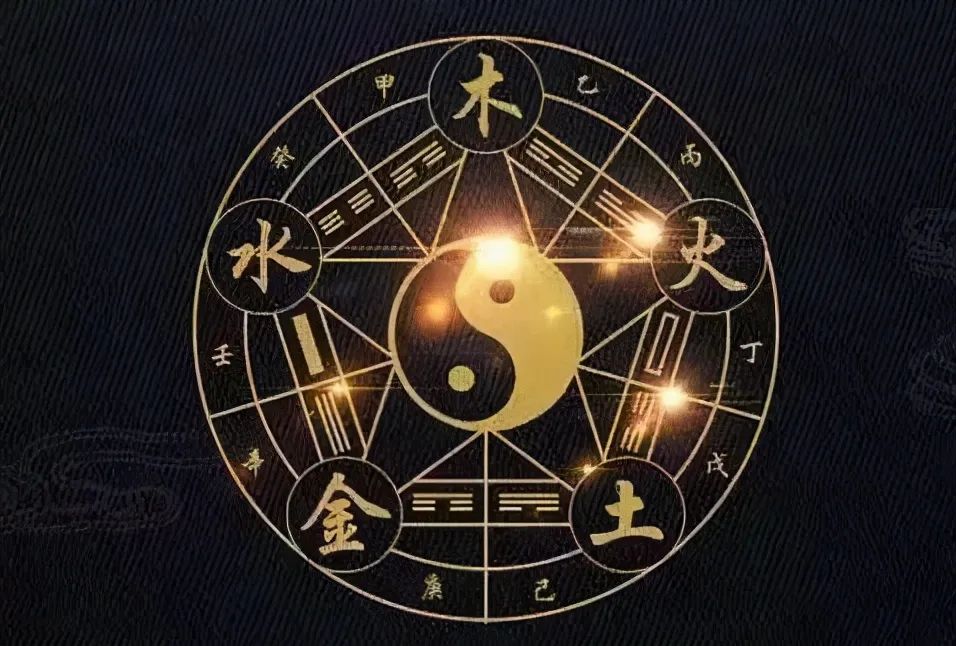
In later developments, the meaning of wǔxíng underwent a qualitative change; it no longer referred to the movement of the five substances themselves but was abstracted into a philosophical concept representing the attributes of five major categories of things.
The periodic changes of the wǔxíng occur alongside the daily cycle of the sun’s rise and fall and the seasonal cycle of the earth’s orbit around the sun. Therefore, in essence, the wǔxíng represents different stages of the movement of yang energy in nature: mù represents the initial birth of yang energy in spring, huǒ represents the flourishing of yang energy in summer, tǔ represents the transformation of abundant yang energy into storage during late summer, jīn represents the flourishing of yang energy in autumn, and shuǐ represents the concealment of yang energy in winter.
The wǔxíng theory posits that no thing exists in isolation or remains static; rather, it maintains coordination and balance through continuous mutual generation and mutual restraint.

Basic Content of the Five Elements Theory
(1) Characteristics of the Five Elements
The characteristics of the wǔxíng have actually transcended the specific substances of mù, huǒ, tǔ, jīn, and shuǐ, possessing broad philosophical implications. The classic summary of the characteristics of the wǔxíng is found in the Shang Shu: Hong Fan: “Water moistens downward, fire rises upward, wood bends and straightens, metal undergoes transformation, earth is the source of agriculture.”
“Wood bends and straightens”: refers to the growth form of trees that can bend or stand straight, expanding gently, which implies growth, elevation, and smoothness. All things or phenomena that possess these functions or properties belong to mù.
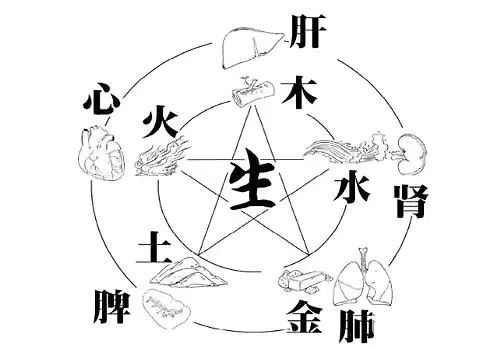
“Fire rises upward”: indicates that fire has the properties of warmth and ascension, which implies warmth and elevation. All things or phenomena that possess these functions or properties belong to huǒ.
“Earth is the source of agriculture”: “source” means “to say”; “agriculture” refers to the planting of grains; “harvest” refers to the gathering of grains. “Agriculture” generally refers to human activities of sowing and harvesting crops, implying biogenesis, support, and acceptance. All things or phenomena that possess these functions or properties belong to tǔ, hence the saying that “earth is the mother of all things.”
“Metal undergoes transformation”: “to follow” means to be in accordance; “transformation” refers to change. The original meaning of “metal undergoes transformation” is that the production of metals arises from change, later extended to imply severity and contraction. All things or phenomena that possess these functions or properties belong to jīn. “Water moistens downward”: indicates that water has the properties of moistening and descending, which implies coldness, moisture, and downward movement. All things or phenomena that possess these functions or properties belong to shuǐ.
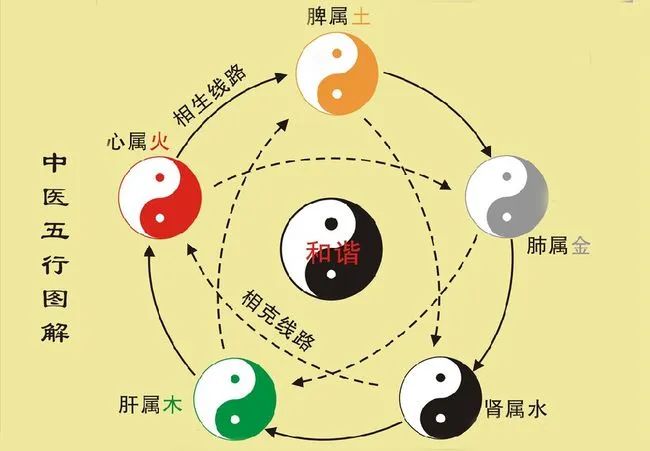

Classification of Things According to the Five Elements
The wǔxíng theory classifies the attributes of things primarily through analogy. For example, the sunrise in the east corresponds to the ascending characteristics of mù, thus it belongs to mù; the heat in the south corresponds to the rising characteristics of huǒ, thus it belongs to huǒ; the cold in the north corresponds to the cold characteristics of shuǐ, thus it belongs to shuǐ.
When associating the five internal organs with the five elements, the liver, which governs upward movement, belongs to mù; the heart, which governs warmth, belongs to huǒ; the spleen, which governs transformation, belongs to tǔ; the lungs, which govern descent, belong to jīn; and the kidneys, which govern water, belong to shuǐ. By classifying things according to the wǔxíng, the myriad changes in nature are interconnected.
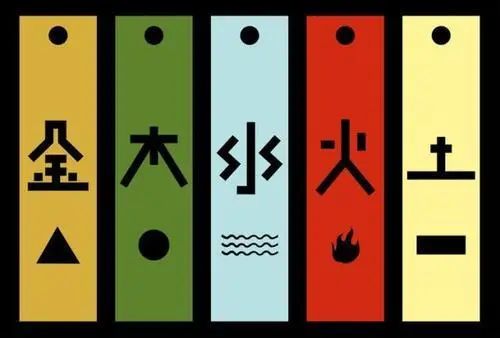
The wǔxíng theory does not classify things in a static or isolated manner but uses the relationships of mutual generation and mutual restraint among the five elements to explore and explain the coordinated and balanced relationships between things, as well as the mutual influences when these relationships are disrupted.

Normal Relationships Among the Five Elements
1. Mutual Generation and Mutual Restraint
Mutual generation: There exists an orderly relationship of mutual support, growth, and promotion among the five elements mù, huǒ, tǔ, jīn, and shuǐ. The law of mutual generation is: mù generates huǒ, huǒ generates tǔ, tǔ generates jīn, jīn generates shuǐ, and shuǐ generates mù. Mutual restraint: There exists an orderly relationship of mutual restriction and control among the five elements. The law of mutual restraint is: mù restrains tǔ, tǔ restrains shuǐ, shuǐ restrains huǒ, huǒ restrains jīn, and jīn restrains mù.
2. Regulation of the Five Elements
The regulation of the five elements refers to the existence of a relationship of both mutual promotion and support, as well as mutual suppression and restriction, thus maintaining a normal state of coordination and balance among the five elements. The regulation of the five elements is precisely the state in which mutual generation and mutual restraint coexist; that is, mutual generation and mutual restraint are inseparable aspects. Without generation, there can be no occurrence and growth of things; without restraint, changes and developments cannot be maintained under normal coordinated relationships. Only through sequential mutual generation and mutual restraint, like an endless loop, can the transformation continue and maintain the dynamic balance among things.


Abnormal Relationships Among the Five Elements
(1) Abnormalities in Mutual Generation Relationships
Maternal disease affecting offspring—such as mù generating huǒ, abnormalities in the mù element can affect the huǒ element, known as “maternal disease affecting offspring.” Offspring disease affecting the mother—such as an initial abnormality in the huǒ element affecting the mù element, known as “offspring disease affecting the mother.”
(2) Abnormalities in Mutual Restraint Relationships
The mutual aggression and insult among the five elements refer to abnormal phenomena that occur when the normal mutual restraint relationships are disrupted. Both aggression and insult imply a strong overcoming of the weak. Aggression refers to excessive restraint or suppression of one element over another, also known as “double restraint.” Aggression follows the same rules as mutual restraint. Insult refers to the reverse restraint and suppression of one element over another, also known as “reverse restraint.” Aggression and mutual restraint are abnormal phenomena, with distinctions and connections between them. The main distinction is that the former occurs due to excessive restraint according to the order of mutual restraint, while the latter occurs in the opposite direction of the order of mutual restraint. As stated in the Suwen: Treatise on the Five Elements: “When qi is excessive, it restrains what it overcomes and insults what it cannot overcome; when it is insufficient, it is insulted and overcomes what it cannot overcome, and lightly insults what it can overcome.”

Application of the Five Elements Theory in Traditional Chinese Medicine
1. Explaining the physiological functions of the five internal organs and their interrelationships
The wǔxíng theory assigns each of the five internal organs to a corresponding element and uses the characteristics of the wǔxíng to explain the physiological functions of the organs.
2. Explaining the interrelations of pathological changes in the five internal organs
(1) Transmission of mutual generation relationships
① Maternal disease affecting offspring: The disease of the maternal organ affects the offspring organ, often seen in cases where maternal organ deficiency leads to offspring organ deficiency, resulting in both organs being deficient. ② Offspring disease affecting the mother: Disease from the offspring organ affects the maternal organ, with conditions where offspring organ deficiency leads to maternal organ deficiency, and conditions where offspring organ excess leads to maternal organ excess, as well as mixed conditions where offspring organ excess leads to maternal organ deficiency, known as “offspring stealing maternal qi.” (2) Transmission of mutual restraint relationships ① Aggression: Excessive restraint leads to disease. This includes cases where one organ is overly strong, excessively restraining the organ it overcomes; and cases where one organ is overly weak, unable to withstand the normal restraint from the organ it cannot overcome, resulting in excessive relative restraint. ② Insult: Reverse restraint leads to disease. Excessive insult occurs when one organ is overly vigorous, leading to its inability to restrain the organ it cannot overcome; insufficient insult occurs when one organ is deficient, leading to the organ it cannot overcome exhibiting reverse restraint. In addition, the wǔxíng can also inform the diagnosis and treatment of diseases, controlling the transmission of diseases. Common treatment principles and methods are determined based on the laws of mutual generation and mutual restraint.
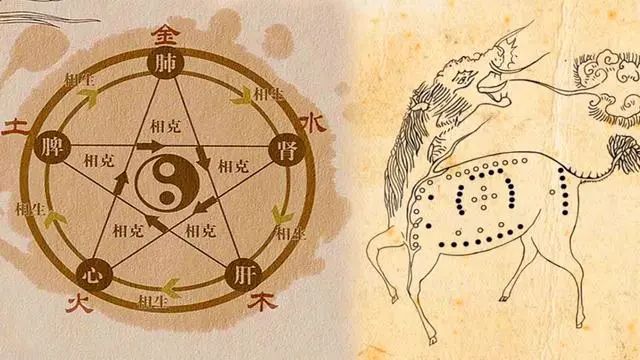
1. Basic treatment principles of mutual generation: tonify the mother and drain the offspring, that is, “if deficient, tonify the mother; if excessive, drain the offspring.” Nourishing water to support wood method—nourishing kidney yin to nourish liver yin. 2. Common treatment methods: tonifying fire to supplement earth method—warming kidney yang to supplement earth yang. Cultivating earth to generate metal method—strengthening the spleen to nourish lung qi. Metal and water generating method—nourishing the yin of the lungs and kidneys. 1. Basic treatment principles of mutual restraint: suppress the strong and support the weak. Suppressing the strong is applicable when mutual restraint is excessive; supporting the weak is applicable when mutual restraint is insufficient. 2. Common treatment methods: suppressing wood and supporting earth method—treating liver-spleen disharmony or liver qi invading the stomach; cultivating earth to treat water method—strengthening the spleen and promoting water to treat water retention and accumulation.
In summary, the wǔxíng theory is an ancient philosophical thought that emphasizes the balance and interrelationships in nature. It has played an important role in the development of traditional Chinese medicine and has provided significant theoretical support for ancient astronomy, calendrical studies, meteorology, and other fields. Although the wǔxíng theory has some flaws and controversies, its influence on Chinese culture and thought is profound, and it is regarded as one of the essences of traditional Chinese culture.
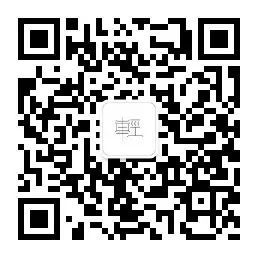
— Scan to Follow —
Long press the QR code
Follow us!

